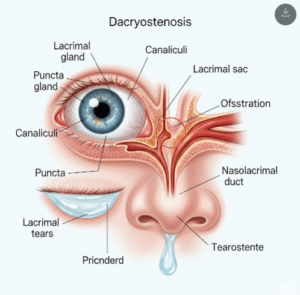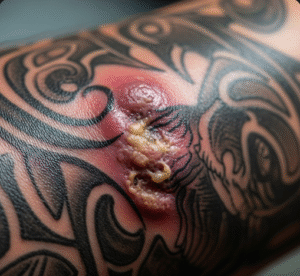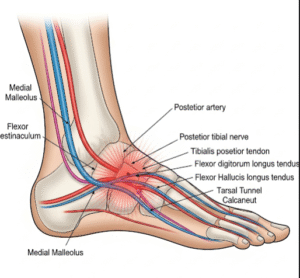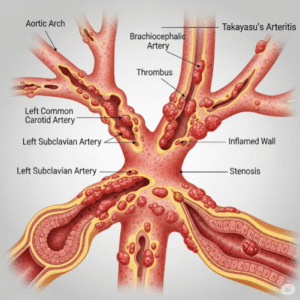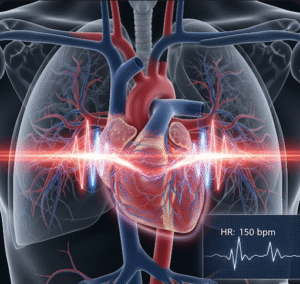Overview
Plastic bronchitis is a rare but potentially life-threatening respiratory condition characterized by the formation of large, rubbery or gelatinous bronchial casts — thick mucus plugs that mold into the shape of the airways. These casts can obstruct the bronchi (large airways in the lungs), leading to severe breathing difficulties or respiratory failure. It can occur in both children and adults but is particularly associated with congenital heart disease, especially following Fontan surgery.
What is Plastic Bronchitis?
Plastic bronchitis is a condition in which thick, cohesive mucus plugs, known as casts, form in the tracheobronchial tree. These casts are made up of fibrin, inflammatory cells, and lymphatic fluid, and can mimic the branching shape of the airways they block. The disease can be acute or chronic, and the size and firmness of the casts vary. In severe cases, patients may cough up entire bronchial molds, which can be frightening and dangerous.
Plastic bronchitis is classified into two main types:
- Inflammatory (Type I) – associated with infections, asthma, or allergies
- Non-inflammatory (Type II) – often linked to lymphatic abnormalities or heart defects
Symptoms
Symptoms can range from mild to life-threatening, depending on the size and location of the cast:
- Coughing, sometimes with expulsion of mucus casts
- Wheezing or noisy breathing
- Shortness of breath or difficulty breathing
- Chest pain or tightness
- Low oxygen levels (hypoxia)
- Fever, if associated with infection
- Recurrent respiratory infections
- Cyanosis (bluish discoloration of lips or skin) in severe cases
- Fatigue or poor exercise tolerance
Causes
Plastic bronchitis has a variety of causes and associations, including:
- Congenital heart defects, especially after Fontan procedure (a surgical treatment for single-ventricle heart defects)
- Lymphatic flow abnormalities – leading to leakage of lymphatic fluid into the airways
- Respiratory infections, including influenza or pneumonia
- Allergic or inflammatory conditions, such as asthma or allergic bronchopulmonary aspergillosis
- Sickle cell disease or thalassemia
- Cystic fibrosis (rare)
- Idiopathic cases – no clear cause identified
Risk Factors
The risk of developing plastic bronchitis increases in individuals who:
- Have undergone Fontan surgery
- Suffer from chronic heart or lung diseases
- Have lymphatic circulation disorders
- Experience frequent respiratory infections
- Have a history of allergic bronchopulmonary conditions
- Are immunocompromised or prone to airway inflammation
Complications
If not properly managed, plastic bronchitis can lead to severe complications, including:
- Complete airway obstruction
- Respiratory distress or respiratory failure
- Hypoxia-induced organ damage
- Recurrent pneumonia or lung collapse (atelectasis)
- Severe anxiety or psychological distress due to coughing up large mucus casts
- Death, in extreme and untreated cases
Prevention
There is no guaranteed way to prevent plastic bronchitis, but some measures may reduce the risk or severity:
- Careful post-operative monitoring in patients with congenital heart disease
- Management of underlying allergies or asthma
- Prompt treatment of respiratory infections
- Respiratory physiotherapy and airway clearance techniques
- Lymphatic imaging and intervention if lymphatic leaks are involved
- Avoidance of known allergens or triggers in susceptible individuals
Treatment Options in Korea
South Korea offers world-class care in pediatric cardiology, pulmonology, and thoracic surgery — all crucial specialties for managing plastic bronchitis. Treatment typically involves a multidisciplinary approach to relieve symptoms, remove casts, and address the underlying cause.
1. Airway Management and Cast Removal
- Bronchoscopy: Direct visualization and removal of bronchial casts using a flexible or rigid scope
- Chest physiotherapy: Techniques like percussion and postural drainage to loosen and remove casts
- Inhalation therapies:
- Nebulized saline or hypertonic saline
- Mucolytics (e.g., dornase alfa, N-acetylcysteine) to thin mucus
- Bronchodilators to open airways
- Inhaled tissue plasminogen activator (tPA) in some advanced cases to dissolve fibrinous casts
2. Treatment of Underlying Conditions
- Cardiac optimization for patients post-Fontan surgery
- Allergy and asthma management with corticosteroids, antihistamines, or immunotherapy
- Antibiotics if infection is present
- Lymphatic intervention:
- Korea offers dynamic contrast magnetic resonance lymphangiography (DCMRL) to assess lymphatic leaks
- Percutaneous lymphatic embolization to seal leaking vessels — available at advanced interventional radiology centers
3. Long-Term Management
- Pulmonology follow-up for airway monitoring and lung function
- Pediatric cardiology and thoracic surgery involvement for congenital cases
- Nutritional support and physical therapy for recovery
- Psychological counseling for children with recurring attacks
4. Where to Seek Care in Korea
Top institutions offering expert care for plastic bronchitis include:
- Seoul National University Children’s Hospital
- Asan Medical Center (Pediatric and Thoracic Surgery Departments)
- Samsung Medical Center (Interventional Radiology and Pulmonology Units)
- Severance Hospital — known for advanced imaging and bronchoscopy services
These hospitals also provide international patient services, with English-speaking staff and coordinated care plans for complex cases.




